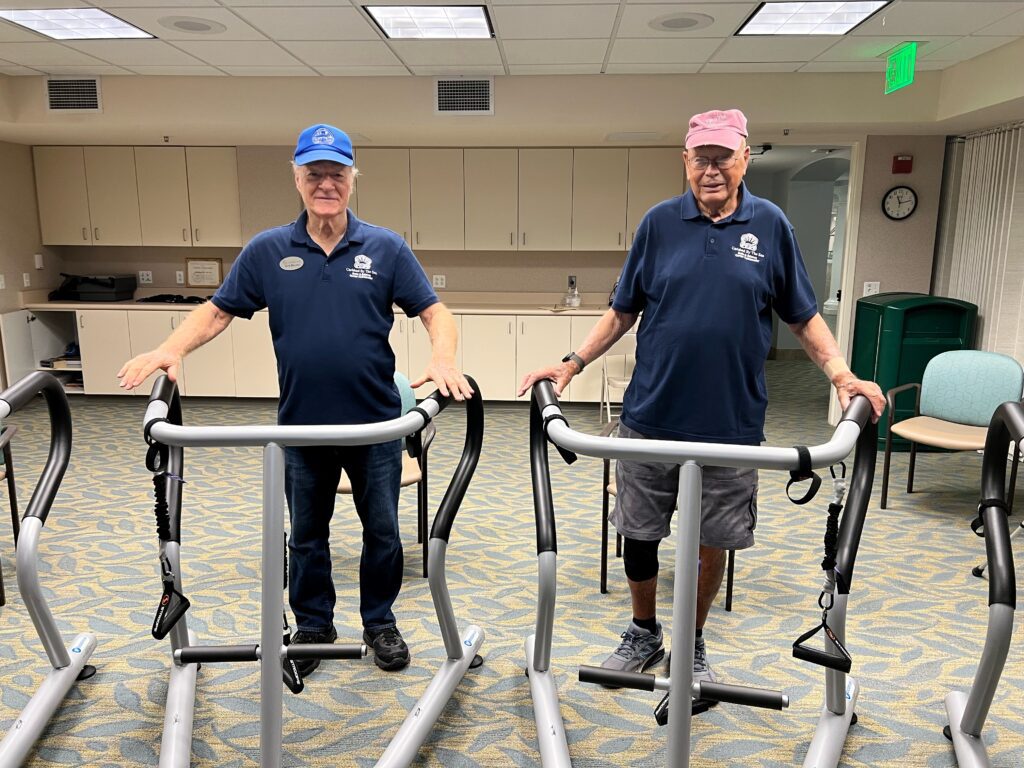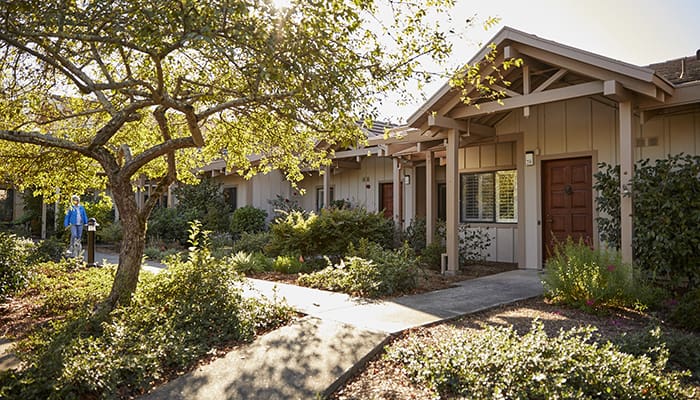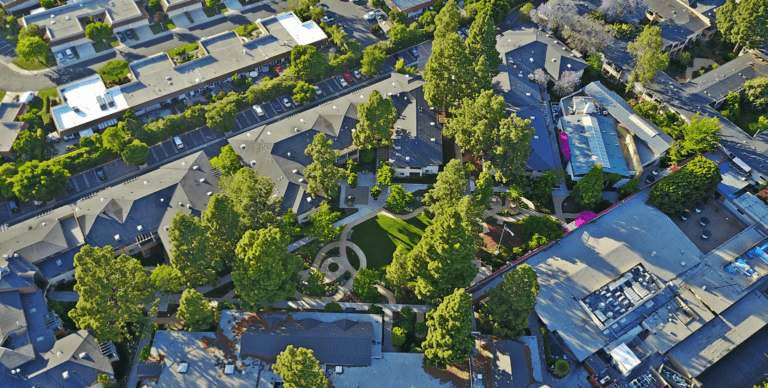September 26, 2024
Brain and Balance Center Empowers Residents to Improve Their Balance and Cognition While Having Fun
At Carlsbad By The Sea, Lisa Dickenson, Director of Fitness and Wellness, is utilizing technology to make improving balance and cognition fun. “If people are having fun then they will come back,” Lisa notes and this sentiment infuses her work to support residents through the community’s Brain and Balance Center.
The Center combats two fears that are prevalent for older adults: the fear of falling and the fear of cognitive decline. Though the fear of falling has long been a known concern for older adults, Lisa shares that as people live longer, the fear of cognitive decline has actually surpassed the fear of falling. The Center utilizes three distinct pieces of technology to assess residents’ balance, empower them to have confidence in their abilities and find fun ways to combine brain and balance training.
Establishing A Starting Point
The first step is to establish a baseline to determine where a resident’s balance currently stands. Lisa uses the RAPID Balance Mat System, a mat that assesses residents’ balance based on their posture and sway. After assessing an individual’s balance, the RAPID Balance Mat System offers five simple exercises that residents can practice daily to improve their balance and decrease risk of a fall. Lisa can modify these exercises to meet the residents’ abilities and make them more accessible. The personalized touch is one of Lisa’s favorite aspects of the technology. “Everyone is different,” she notes “so it’s not one size fits all.”
Lisa has seen how the RAPID Balance Mat System can make a difference in resident’s lives. Before fully rolling out the Brain and Balance Center, she recruited fifteen residents who participated in her fitness classes to test out the technology. Each resident completed a balance assessment and then did their five assigned exercises five times a week for two months. At the end of the field study, residents had increased their balance scores by an average of 20%. “I think this is even more significant because the people that I was working with were already doing a lot on a day-to-day basis for their balance, including working out,” Lisa shares. “For them to do that much better in such a short time, I thought that was amazing.”
Lisa is now rolling this out to all residents who are interested in participating by doing an assessment every quarter to gauge their fall risk and balance score. The RAPID Balance Mat System tracks these scores so residents can see how their balance is improving over time.
Instilling Confidence

The second important component of the Brain and Balance Center’s work is the S3 Balance device, an angular U-shaped stand specifically designed to help people feel safe while standing. Lots of detailed research went into creating the correct angles and positioning so that people can stand up from their chairs within the S3 Balance and work on balance exercises without the fear of falling. “Fear of falling is actually just as bad as being physically at risk to fall because that fear actually makes you more predisposed to fall,” Lisa shares. By being surrounded by a stable structure that is ready to provide support if needed, the S3 Balance device gives residents confidence to stand up and complete balance exercises, improving their physical strength. The company behind the S3 Balance also provides specific balance-promoting classes that work well with the structure.
Lisa incorporates balance-promoting classes into her calendar of programs, holding classes every fifteen minutes between 10am and noon every day so residents can easily fit working on their balance into their schedule. “A lot of people won’t come to a 45-minute class,” Lisa admits, “But fifteen minutes is do-able.” These classes also add a social component that helps hold each resident accountable for showing up and completing their exercises. For residents that attend classes regularly, Lisa has seen their balance improve by up to 60%
Centered on Fun

The third piece of technology that Lisa uses in the Brain and Balance Center is the SMARTfit, a brain-training board that features nine screens that project numbers, letters and symbols in different configurations. The SMARTfit is programmed with hundreds of games that work out the brain. Lisa combines SMARTfit games with physical tasks, like marching, which is an example of dual tasking. Dual tasking is when a physical exercise and cognitive event are completed at the same time, promoting the creation of new neurological cells, which helps improve cognition and memory.
Outside of the neurological benefits, the game side of the SMARTfit is just plain fun, which Lisa loves as a way to get more people involved with the training. Lisa intentionally placed the board in a busy hallway and she’s found that both residents and staff love to use it. They even started competing against each other to see who could score the highest on specific games. “It’s so fun and it’s great for the employees and the residents because it brings them together,” Lisa shares.
The community even added SMARTfit to their Summer Olympics. Teams of residents competed against each other in a relay race to hit all of the letters in the alphabet in order, tagging in and out after each set of five letters. Lisa notes this was a great opportunity to share the SMARTfit board with the community because “it’s a team competition and working as a team is always way more fun.”
Looking to the Future
Lisa is in the process of creating a more comprehensive program that incorporates all three pieces of technology. “We’ve only just scratched the surface because there are so many ways that it can be used,” she shares. Her goal is to create a more formal twelve-week program that will invite residents to assess their balance score using the RAPID Balance Mat System and then work on their cognition and balance using the S3 Balance and SMARTfit. Lisa is excited about the possibilities because “nobody has the three pieces of technology that we have or a Brain and Balance Center. Places are focusing on just balance or just the brain but no one else has done both together.”
Lisa is also looking for ways that the Brain and Balance Center’s programs can be shared more widely. She has begun working with the Front Porch Center for Innovation and Wellbeing (FPCIW). “I got really excited when the FPCIW team jumped in because it’s fun to have additional people help put it together and continue to improve the program,” she shares. Jennifer S. Lee, FPCIW Operations Manager is also excited by how Lisa’s work can support more residents and staff. “Lisa has developed a visionary program that benefits residents and staff alike, and the next logical step is to share this vision across Front Porch communities,” she notes. “I’m excited for the very real impact that this program will provide.”


